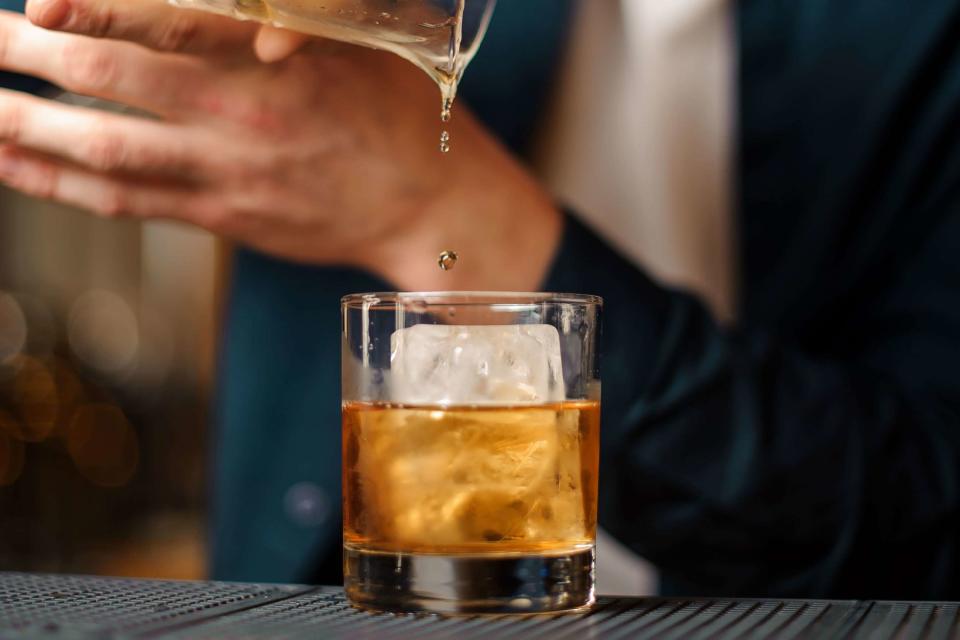How Much Water Is Too Much to Put in Your Whiskey? Scientists Have the Answer
A Washington State University-led study determined when diluted whiskey starts to lose its characteristics.

Maksym Fesenko / Getty Images
If part of your personality is “whiskey drinker,” then you’ve probably accumulated a large collection of whiskey stones from various birthdays and holidays, and you probably have at least one ice cube tray designed to make oversized frozen spheres. But according to a study recently posted in the journal Foods, that one big ice cube could be crucial for enjoying your whiskey to its fullest, and its all because of what happens when that particular spirit gets too watered down.
According to the study, “Impact of Dilution on Whisky Aroma: A Sensory and Volatile Composition Analysis,” adding a small amount of water to a glass of whiskey can help to reveal its full flavor profile, but too much water can weaken both its taste and aroma. The Washington State-led research team determined that over-diluted bourbons, Scotches, and other whiskeys were increasingly difficult to distinguish from each other.
To conduct this research, 25 participants were taught how to perceive different tastes and aromas in whiskeys, and then they were asked to evaluate a group of six 86-proof whiskeys, which included three bourbons and three Scotches. In addition, the researchers themselves chemically analyzed how 25 whiskeys — including bourbon, Irish whiskey, rye, blended Scotch, and single-malt Scotch — responded when water was added.
Related:15 Best Single Malt Scotch Whiskies for Less Than $100
When the whiskeys were completely undiluted, the participants could differentiate between them, and when they reached a concentration of 80% whiskey and 20% water, they could still distinguish between the spirits in each group. But that changed, as more water as added to each sample.
After reaching a dilution of more than 20% water, the whiskeys started to both smell — and taste — like each other (although the participants could still differentiate between the Scotch group and the bourbon group).
“If you want to enjoy a specific whiskey, this suggests that you don’t want to dilute it by more than about 20%,” Tom Collins, an assistant professor at Washington State and the study’s lead author told WSU Insider. “By the time you get to 60/40 whisky to water, the whiskies are not differentiated by the panelists; they begin to smell the same, and that’s not really what you’re looking for.”
One of the most striking changes involved the Scotch samples, which had a smoky, peaty scent until they were over-diluted; at that point, they started to smell lighter and fruitier. As for the bourbons, they went from having oaky or vanilla scents to picking up the “aromas of the corn and grains used to make them.”
And that’s where those giant ice cubes (or ice spheres) come in. Collins told WSU Insider that they can melt just enough to enhance whiskey’s flavor, without turning that glass into a watered-down disappointment. “This study helps to understand why those large, square ice cubes have become so popular because you can actually enjoy the whisky before it gets diluted to the point that it’s not the same whisky,” Collins said.
Well, at least you know what you’re getting for your next birthday.
For more Food & Wine news, make sure to sign up for our newsletter!
Read the original article on Food & Wine.

